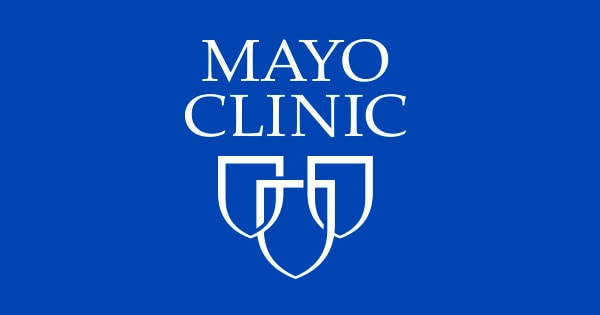<IFRAME height=21 src="http://www.ehow.com/marketing/livestrong_partnership.aspx?ad=9" frameBorder=0 width=300 scrolling=no itxtBad="1"></IFRAME><!-- LIVESTRONG AD END -->
<!-- google_ad_section_start() -->How to Treat Radiation Sickness
<!-- google_ad_section_end() --><CITE>By an eHow Contributor </CITE>
<?xml:namespace prefix = fb ns = "http://www.facebook.com/2008/fbml" /><fb:like class=" fb_edge_widget_with_comment fb_iframe_widget" width="470" ref="like" href="http://www.ehow.com/how_2070353_treat-radiation-sickness.html" fb_ref="recommend" action="recommend"><IFRAME style="BORDER-BOTTOM: medium none; BORDER-LEFT: medium none; WIDTH: 470px; HEIGHT: 22px; BORDER-TOP: medium none; BORDER-RIGHT: medium none" id=f257be8898daab8 class=fb_ltr title="Like this content on Facebook." onload=FB.Content._callbacks.f1abea3bde6292e() src="http://www.facebook.com/plugins/like.php?action=recommend&api_key=63203377906&chan nel_url=http%3A%2F%2Fwww.ehow.com%2Fxd_receiver.ht m%3Ffb_xd_fragment%23%3F%3D%26cb%3Df217ed08867c34% 26relation%3Dparent.parent%26transport%3Dfragment& href=http%3A%2F%2Fwww.ehow.com%2Fhow_2070353_treat-radiation-sickness.html&layout=standard&locale=en_US&node_ty pe=link&ref=like&sdk=joey&show_faces=true&width=47 0" frameBorder=0 allowTransparency name=f18a6976acc54e7 scrolling=no itxtBad="1"></IFRAME></fb:like>
<!-- google_ad_section_start() -->There is no cure for radiation sickness, which is caused by body tissue exposed to radioactive substances. The symptoms are treated on a case by case basis since the degree of sickness and the symptoms vary from person to person. The effects cannot be reversed, but if they're treated in a timely manner the damage may be contained.
<!-- google_ad_section_end() -->
Difficulty: Challenging
Instructions
<!-- google_ad_section_start() -->
Radiation Treatmentswww.CancerCenter.com
Chat w/a Cancer Info Expert About Radiation Treatment Options
Read more: How to Treat Radiation Sickness | eHow.com http://www.ehow.com/how_2070353_trea...#ixzz1Gb3AhklL
<!-- google_ad_section_start() -->How to Treat Radiation Sickness
<!-- google_ad_section_end() --><CITE>By an eHow Contributor </CITE>
<?xml:namespace prefix = fb ns = "http://www.facebook.com/2008/fbml" /><fb:like class=" fb_edge_widget_with_comment fb_iframe_widget" width="470" ref="like" href="http://www.ehow.com/how_2070353_treat-radiation-sickness.html" fb_ref="recommend" action="recommend"><IFRAME style="BORDER-BOTTOM: medium none; BORDER-LEFT: medium none; WIDTH: 470px; HEIGHT: 22px; BORDER-TOP: medium none; BORDER-RIGHT: medium none" id=f257be8898daab8 class=fb_ltr title="Like this content on Facebook." onload=FB.Content._callbacks.f1abea3bde6292e() src="http://www.facebook.com/plugins/like.php?action=recommend&api_key=63203377906&chan nel_url=http%3A%2F%2Fwww.ehow.com%2Fxd_receiver.ht m%3Ffb_xd_fragment%23%3F%3D%26cb%3Df217ed08867c34% 26relation%3Dparent.parent%26transport%3Dfragment& href=http%3A%2F%2Fwww.ehow.com%2Fhow_2070353_treat-radiation-sickness.html&layout=standard&locale=en_US&node_ty pe=link&ref=like&sdk=joey&show_faces=true&width=47 0" frameBorder=0 allowTransparency name=f18a6976acc54e7 scrolling=no itxtBad="1"></IFRAME></fb:like>
<!-- google_ad_section_start() -->There is no cure for radiation sickness, which is caused by body tissue exposed to radioactive substances. The symptoms are treated on a case by case basis since the degree of sickness and the symptoms vary from person to person. The effects cannot be reversed, but if they're treated in a timely manner the damage may be contained.
<!-- google_ad_section_end() -->
Difficulty: Challenging
Instructions
<!-- google_ad_section_start() -->
- 1
Receive treatment immediately if you have been exposed to radioactive substances. In mild cases the exposure may result in nausea, diarrhea, vomiting and weakness. These symptoms can be treated with specific medications designed to reduce these complaints. Blood transfusions may be needed to treat anemia and antibiotics to reduce the threat of infections. - 2
Receive a bone marrow transplant if you have experienced a massive does of radiation. Death is usually immediate, but some people have survived with successful transplant surgery. The drug filgrastim is used in patients after chemotherapy to stimulate white blood cells and may be helpful in repairing damage to bone marrow. - 3
Take potassium iodide orally either before or after exposure, although it works best if taken before exposure. The non-radioactive potassium salts take up residence in the thyroid gland, leaving only one percent of space for contamination by radioactive iodines. If exposure is limited to hands and feet and no vital organs have been contaminated the danger is greatly reduced and radiation poisoning will not occur. - 4
Be aware of any new treatments or medications that become available. Neumune, used as a counteractive to radiation poisoning, is now going through phase I trials. FDA approved Radiogardase, pentetate calcium trisodium and pentetate zinc trisodium are drugs used to rid the body of radioactive substances. - 5
Return to your doctor for exams regularly even if you've recovered from the initial symptoms of radioactive poisoning. Over the months and years following exposure, there's always a danger of related health problems and delayed effects.
Radiation Treatmentswww.CancerCenter.com
Chat w/a Cancer Info Expert About Radiation Treatment Options
Read more: How to Treat Radiation Sickness | eHow.com http://www.ehow.com/how_2070353_trea...#ixzz1Gb3AhklL

Comment